NevadaToday
Tracking the insect apocalypse 22 years of data reveal an imminent threat to tropical insects
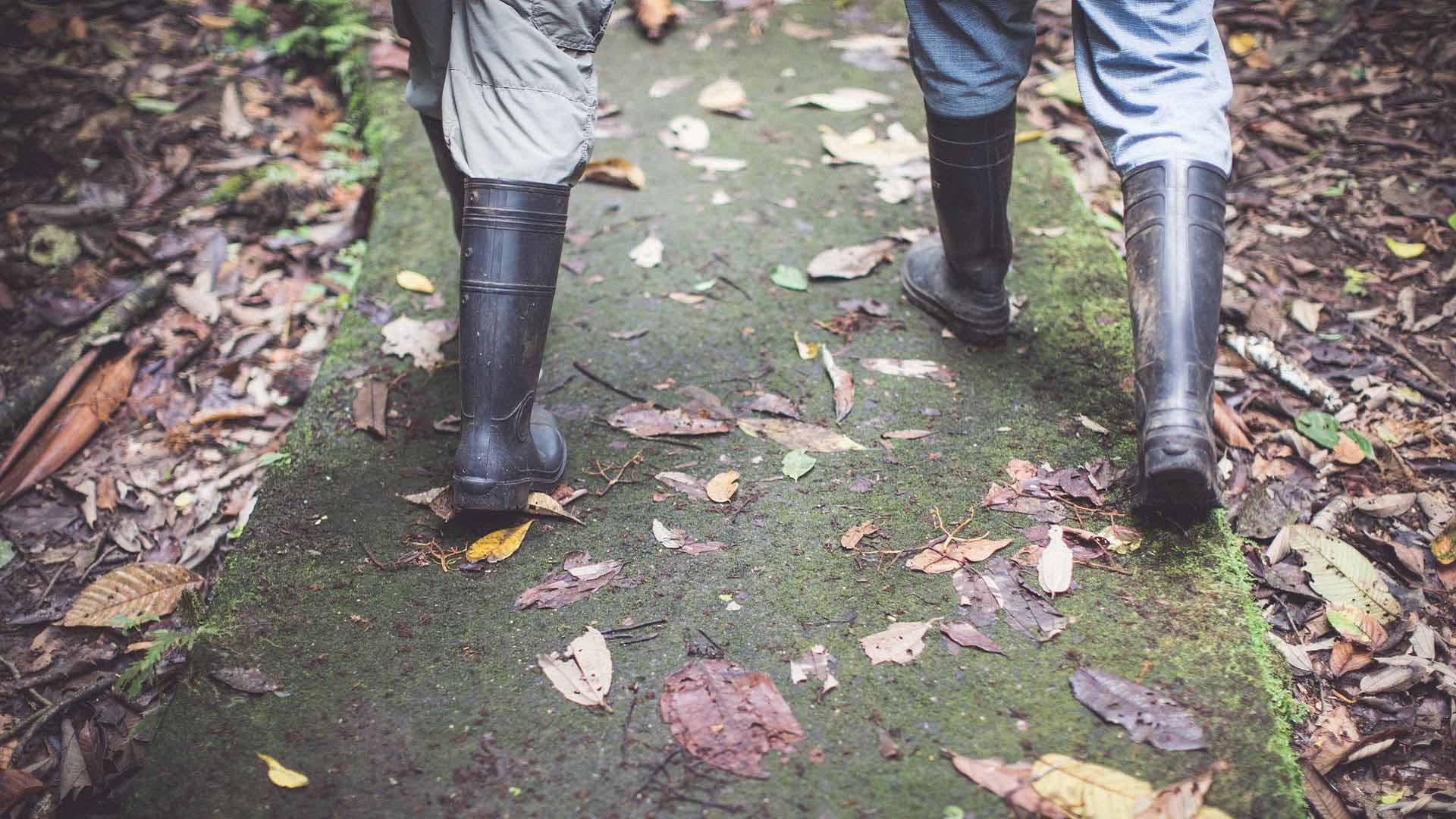
Tracking the insect apocalypse
Graduate student Danielle Salcido stomps through thick jungle underbrush in knee-high rubber boots, plastic bags of plant samples tied to her backpack. It’s muggy and lightly raining, but there is one thing missing. The bugs. At least the quantity of insects you would expect to come across in the jungles of Costa Rica. Salcido is part of a team of researchers with the Hitchcock Center for Chemical Ecology that has been studying tropical caterpillars and their parasitoids in La Selva Biological Station in Costa Rica for the past 22 years. Their most recent analyses of the two decades’ worth of data indicate staggering declines in caterpillar and parasitoid diversity in this protected swath of jungle. Salcido turns over leaf after leaf looking for the herbivores, finding only a fraction of what her graduate advisor and biology professor Lee Dyer was finding at the same site only 10 or 15 years earlier.
“The beauty of studying in the tropics is it’s such a diverse place,” Salcido said. “We have 22 years of information on plants and caterpillars and parasitoids at these sites. I wanted to know how rich are these interactions? How diverse are they? When I started exploring those questions, I expected to see these beautiful, rich assemblages over time, but what I ended up finding was that interaction diversity was declining.”
Declines in insect populations are not limited to La Selva or the caterpillars and parasitoids Salcido is studying. Dramatic insect declines have been recorded all over the world, the most shocking claim made recently in a paper published in Biological Conservation reporting that 40% of our world’s insect populations were at risk of extinction in the coming decades. In 2017 a group of German researchers found that insect populations in Germany had declined by more than 75% over the course of 27 years. These declines span the globe – from temperate zones to the tropics. Studies like Salcido’s and others have influenced the media’s coining of the term ‘Insect Apocalypse’ – an ominous nickname for the future of such delicate ecosystems.
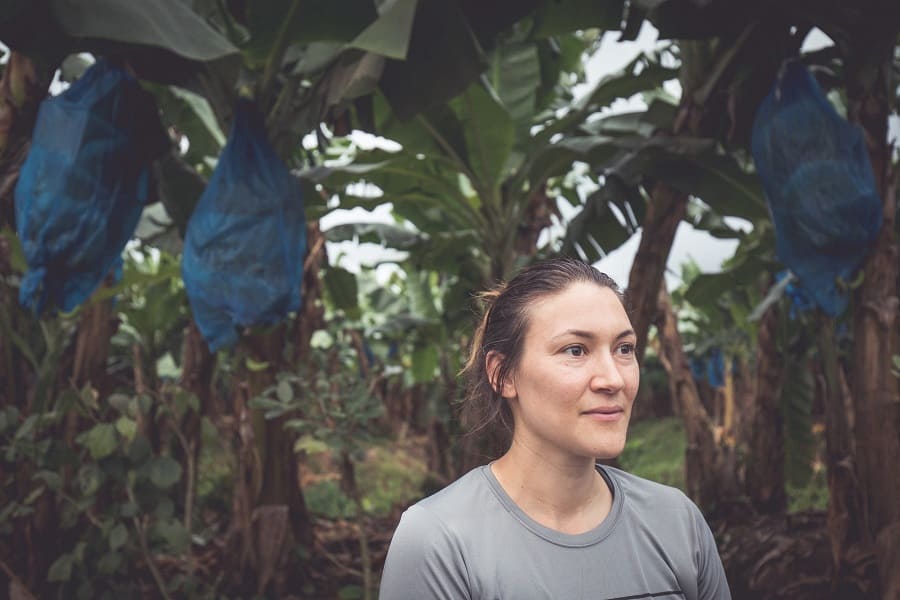
Salcido’s interpretation of the long-term data set, published in Scientific Reports in January, has spearheaded a new set of questions that are central to her graduate research
“More important than understanding the quantity of the decline, we’re trying to figure out the functional consequences of these insect declines,” Salcido said. “We have the opportunity to explore this question with multitrophic data – data that involves organisms at different positions in the same food chain such as the plants, herbivores and their parasitoids we study.”
The complexity of these interactions is extraordinary, as is their delicacy. Better understanding these interactions can help us to imagine what the natural backdrop will look like 10, 20 or 100 years from now.
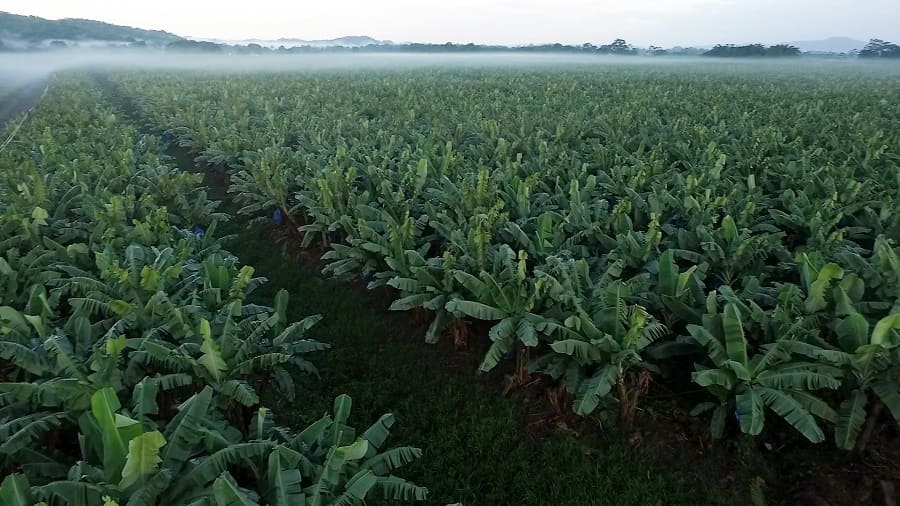
“With these changes, there are going to be certain winners and losers,” Salcido said. “The loss of caterpillar species formerly controlled by a diverse assemblage of parasitoids may result in pest outbreaks. In this case, some caterpillar species are winners. On the other hand, the buffet of caterpillars that once supported insectivorous birds, amphibians and reptiles is not as rich and abundant, so it is likely that other trophic levels will decline. This would have major implications for forest health because these animals contribute to nutrient cycling and natural biocontrol. Nature, as we see it, will completely change. Some species and their interactions will disappear, other species and interactions will become more prevalent and interactions will rewire. So for a time to come, the naive observer will still see the forest as a living organism. But without diverse assemblages, the ability of the ecosystem to persist and provide the same services and functional roles is unknown. Rare interactions and species are the most vulnerable, yet probably most important for ecosystem stability. When you pull those out of the network, the whole community becomes more simplified. And the big question is, will it still be stable? Will it be healthy?”
The web of causation
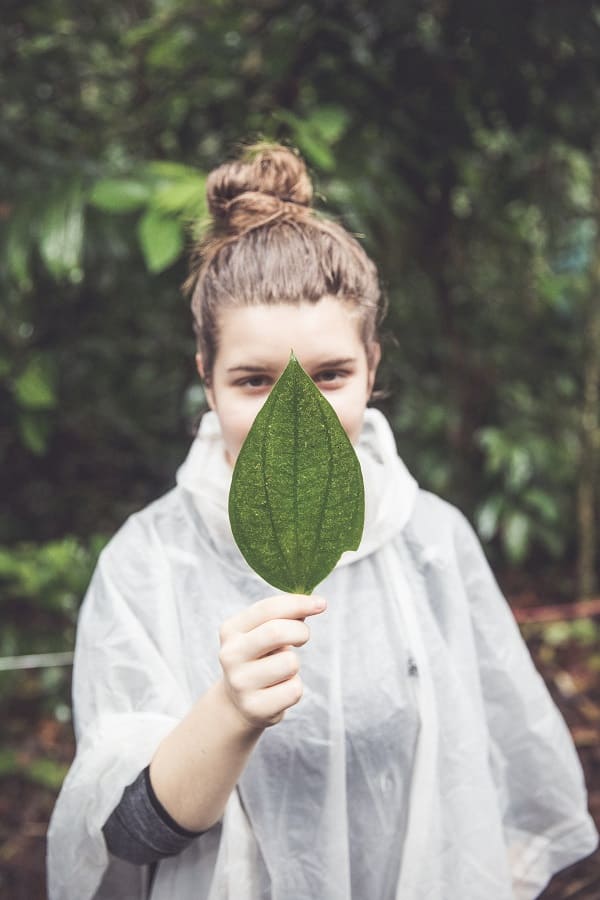
Global change is a broad term for many human-caused changes that are affecting natural systems. It can mean habitat destruction, habitat modification or fragmentation, pesticide use as well as global climate change and the resulting rising temperatures and increases in extreme weather events. The declines in species biodiversity that have been recorded at La Selva Biological Station by Salcido, Dyer and others are likely the result of a mix of factors that when combined have been devastating.
La Selva is a swath of intact Costa Rican jungle protected from development specifically for use by science researchers and educators. Hints of research projects can be seen along the over 30 miles of pathways that weave through the jungle – a tree tagged with orange tape, a 3-square-foot plot of jungle marked off with string. La Selva is recognized as one of the most productive field stations in the world for tropical research and peer-reviewed publications. It is an incredibly valuable resource for scientists, and while protected, it is not impermeable. La Selva is a peninsula of land surrounded by intense agriculture. On the direct perimeter of the park, there are banana plantations, pineapple and palm crops and other agriculture where unregulated amounts of pesticides are being used. New research is showing that those pesticides are entering the park.
“La Selva is just over 1600 hectares,” Dyer said. “It’s really just a fragment, but it’s surrounded by agriculture and some of that agriculture has intensified. There are more pineapple plantations, more palm plantations. The banana plantations have moved from being cooperatives to being run by larger companies, so there are a lot more insecticides, nematocides, fungicides and herbicides that are making their way into La Selva. It’s hard to imagine that those changes would not have an impact on the insect populations here.”
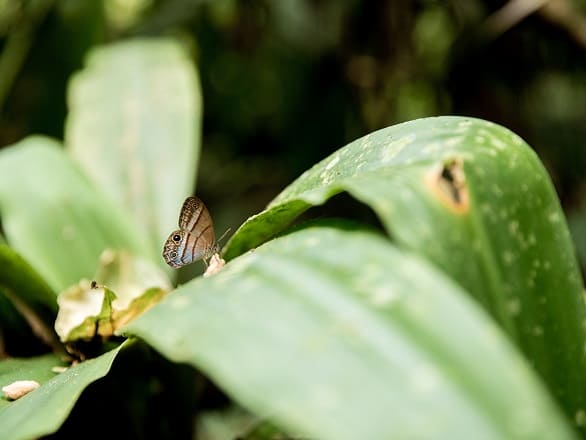
Euptychia jessa (Satyr buttefly, Nymphalidae)
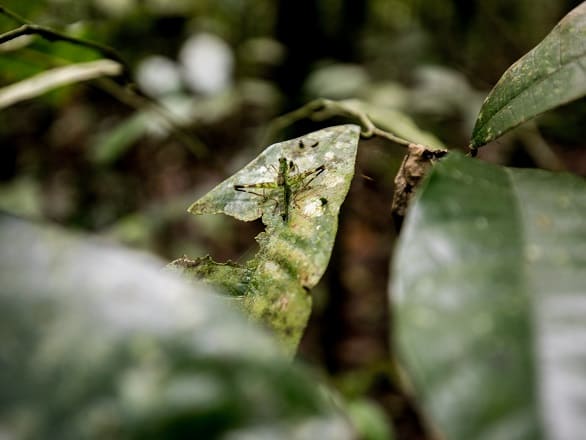
Eumastacidae (airplane grasshopper)
Walk far enough into the park and you will come across large bare patches where the thick jungle canopy opens up exposing the sky. Extreme weather events have increased, and these bare spots are the result of a recent blow-down event in May of 2018 that ripped through the protected land, uprooting huge fragments of forest. This disruption to habitat and herbivory is especially difficult to recover from for the rare species of insects. Warming temperatures, flooding events and extreme weather are devastating the more delicate populations of creatures.
“It’s likely that in the face of new pressures such as global climate change, these ecosystems will not be able to respond and that they will not be able to remain stable,” Salcido said. “If you think of nature having to continually respond to new disturbances and not having the big populations to act as a source for new colonization and population – this is why we’re seeing these declines.”
Science to the public
As is often the case, there is no silver bullet – no clear and simple solution to the ecological threats of today. Dyer and Salcido have the added challenge of advocating for the small, undervalued and often unpopular members of our organismal world.
“It’s really challenging to advocate for any small organism, something that’s not a polar bear that’s losing its habitat,” Dyer said. “But we owe trillions of dollars a year in ecosystem services – pollination, keeping our crops green, keeping our water clean – to the world of insects. We even have to give them credit for a lot of our arts and culture. The movie ‘Alien’ is basically a movie about a parasitoid.”
One tool Salcido and Dyer use to influence change and find other insect advocates has been to involve non-scientists in their research. In fact, Salcido’s involvement in the research is the result of outreach efforts. Since Dyer began his tropical research in 1997, he has employed the help of volunteers through the Earthwatch Institute – a nonprofit that pairs teams of volunteers with leading scientists like Dyer to help with research projects around the world. In 2010, Salcido, then a high-school biology teacher volunteered on one of Dyer’s Earthwatch teams in Ecuador along with a group of fellow teachers. After returning to her classroom for five years, Salcido reached out to Dyer and applied for the Ecology, Evolution and Conservation Biology graduate program at the University of Nevada, Reno where she started in 2015 as a master’s student.
“Dani fell in love with the biodiversity of the rainforest, the same way I had years ago,” Dyer said. “She’s really smart and really driven. I could tell from our time in the field that she was going to be a natural at this work.”
Dyer accepted Salcido as a master’s student, but made a deal with her that if she was awarded a National Science Foundation Graduate Research Fellowship – a very prestigious and selective fellowship – she would get her Ph.D. Salcido was awarded the fellowship and has dedicated her doctoral research not only to the interactions between caterpillars and parasitoids, but to the effectiveness of citizen science as an educational model for the general public.
“The idea that we are sharing our stories and research with the public, especially the youth, that’s probably the glimmer of hope in all of this,” Salcido said. “There is a huge value in educating the public and not limiting our research to scientific journals. We’re getting our message out to a younger audience that will have the capacity to make decisions in the future that will influence how much Mother Nature will be impacted. We work with a generation that has grown up with the idea that there are consequences to the previous generation’s choices. They already have the concern. I think if we work with them and show them all the nuanced ways in which the prior generation is impacting Mother Nature, that maybe they will be more proactive in making better choices.”
 Field technician Beto Garcia and his wife Daysie stand in front of their home and lush garden of local foliage harvested from the surrounding jungle and replanted.
Field technician Beto Garcia and his wife Daysie stand in front of their home and lush garden of local foliage harvested from the surrounding jungle and replanted. "My wife loves her plants and flowers," Garcia said. "The connection between us and the forest is very special. To me it is a source of work that helps me support my family and move up. It is also very beautiful. Walking in the forest feels like therapy. If we walk through the forest we can see insects, plants – all different species. Walking in the forest is very important for me, emotionally, to clear my bad thoughts and renew my energy."
In addition to engaging the public through citizen science, the research project employs two local field technicians, Roberto “Beto” Garcia in Costa Rica and Wilmer Symbioana in Ecuador, to work alongside Salcido, Dyer and the Earthwatch teams.
“The field technicians and parataxonimists from the local communities provide a tremendous wealth of information beyond what us grad students who are only here for a few years will ever be able to comprehend,” Salcido said. “They may not have a technical education from a university, but they are these libraries of information. It’s very humbling and it’s wonderful to be able to work with people who have an interest in their local environment.”
With years of training in the field, these technicians have ownership in the project and are primed to pass on the message of conservation to their local communities. Costa Rican field technician, Garcia, has been working alongside Dyer for over 20 years.
“Even though I have lived here my whole life and the forest has been a part of my life since I was a child, there were many things I ignored when I was younger,” Garcia said. “When I began coming to La Selva and working on this project, I gained a higher respect for nature, the ecosystem and all of the organisms that live in the forest. I have been able to pass all that information and respect on to my children.”
Garcia describes the culture of Costa Rica 30 years ago, where the jungle was considered useless land compared to grazing pastures.
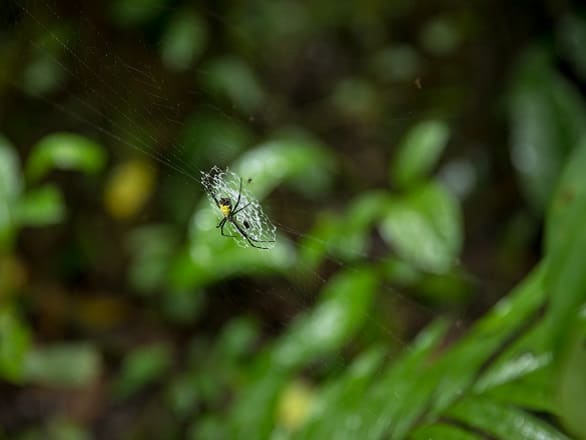
Argiope sp. (Araneidae)
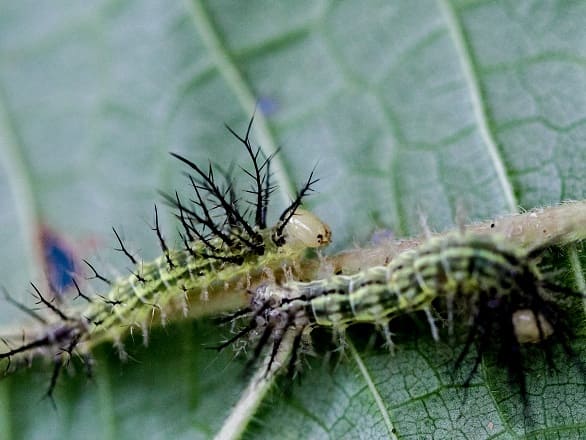
Automeris sp. (silk worm, Saturniidae)
“I grew up with that mentality,” Garcia said. “At the time, I thought cutting down the forest was the right thing to do. That is why I believe education is the most important asset, where governments should invest. We need to, and we are, changing the mentality of children in schools, little by little. We’re teaching them that where you chop down one tree, you plant two in its place.”
A way forward
The iconic suspended bridge over the Rio Puerto Viejo that runs through La Selva offers visitors to the Station a unique vantage point of the seemingly endless interactions happening in the jungle each day. From the line of leaf cutter ants marching along the handrail to the crocodile lurking on the river banks, it’s difficult to imagine the demise of such a biologically rich landscape. But if you listen closely enough, you can hear the rumble of trucks at the perimeter of the park or a plane flying over the neighboring banana plantation spraying pesticides on crops fed by this same river. In the distance, you can see bare patches where the jungle canopy suddenly drops off. Salcido leads a troop of young citizen scientists across the bridge toward the communal lab space.
“It’s very clear that there are these major declines in biodiversity,” Salcido said. “I’m not providing an answer in my research of how we can combat this, but we need to make this an issue and we need it to gather attention. I hope the public realizes that they have the capacity to make choices every day that impact Mother Nature. If something like learning about insect population declines makes us rethink our food and consumer choices, that is something that would make me feel like my research was successful.”
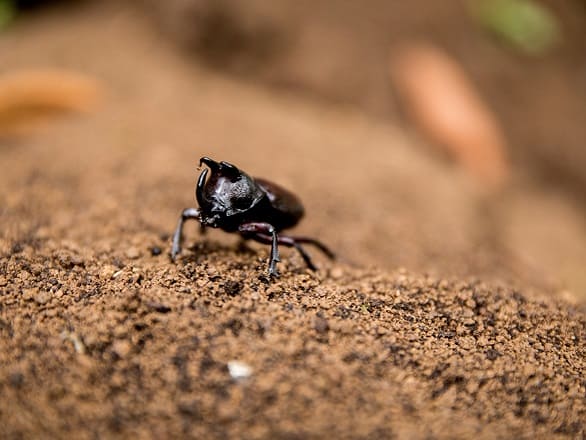
Male Strategus sp. (scarab beetle, Scarabaeidae)
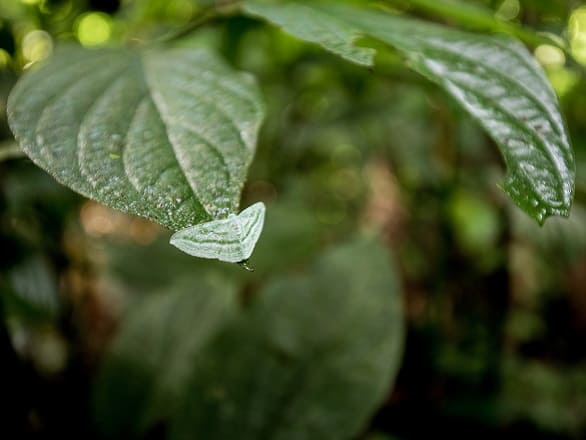
Nemoria sp. (inchworm, Geometridae)



